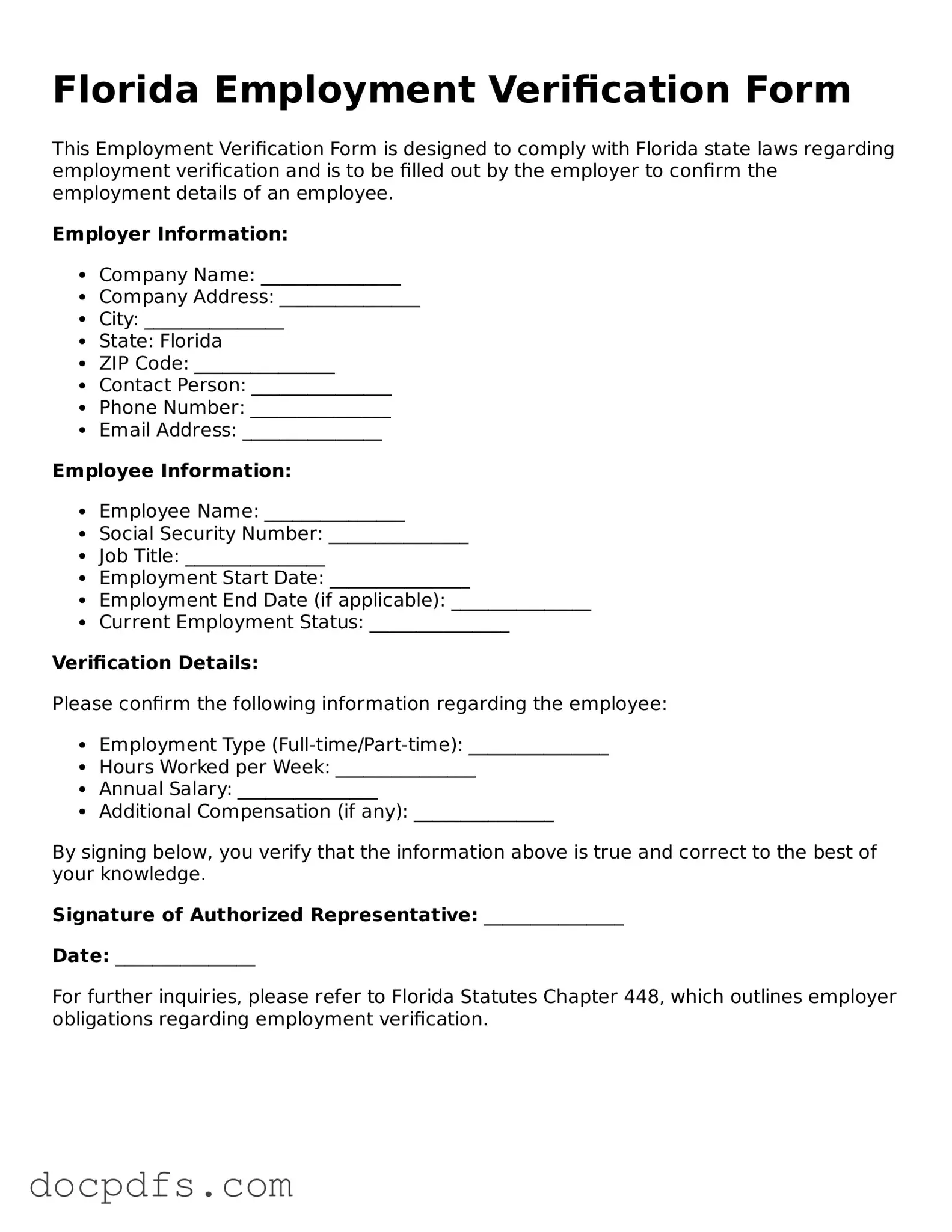The Florida Employment Verification form is a document used to confirm an individual's employment status. This form is often required by various entities, such as lenders, landlords, or government agencies, to verify that a person is currently employed or has been employed in the past. It typically includes details such as the employee's job title, dates of employment, and salary information.
Generally, the form is completed by employers. If an employee requests verification for a loan, rental application, or other purposes, the employer will fill out the form to provide the necessary information. Employees may also need to provide consent for their employer to disclose this information, depending on company policies and privacy regulations.
The submission process can vary depending on the requirements of the requesting party. Here are common methods of submission:
-
Directly to the employee, who will then provide it to the requesting entity.
-
Sent via email or fax directly to the requesting lender, landlord, or agency.
-
Submitted through an online portal, if the requesting party has one available.
It is important to check the specific instructions provided by the requesting entity to ensure proper submission.
The form usually contains several key pieces of information, including:
-
Employee's full name and contact information.
-
Employer's name and contact information.
-
Job title and description of duties.
-
Dates of employment, including start and end dates.
-
Salary or hourly wage, if applicable.
-
Verification of employment status (active, terminated, etc.).
This information helps the requesting party assess the employee's qualifications and reliability.
While there are no specific state laws governing the Employment Verification form itself, employers must comply with federal and state laws related to privacy and employment verification. For instance, the Fair Credit Reporting Act (FCRA) may apply if the verification is part of a background check. Employers should also ensure they have the employee's consent before disclosing any personal information. Maintaining confidentiality and adhering to applicable laws is crucial to protect both the employer and employee.
